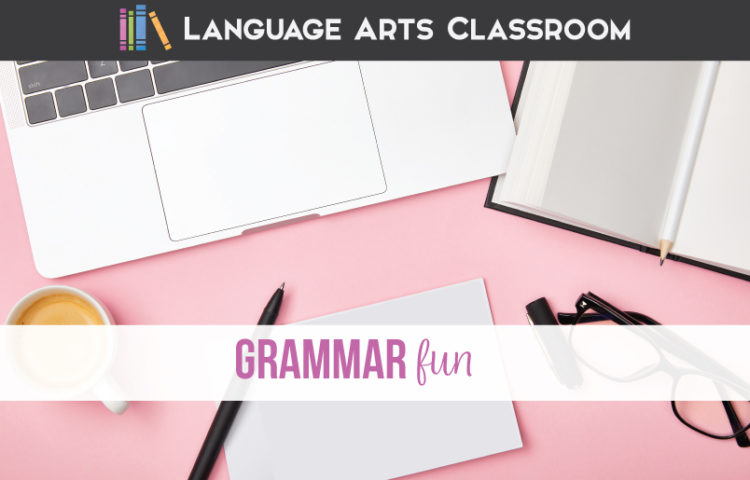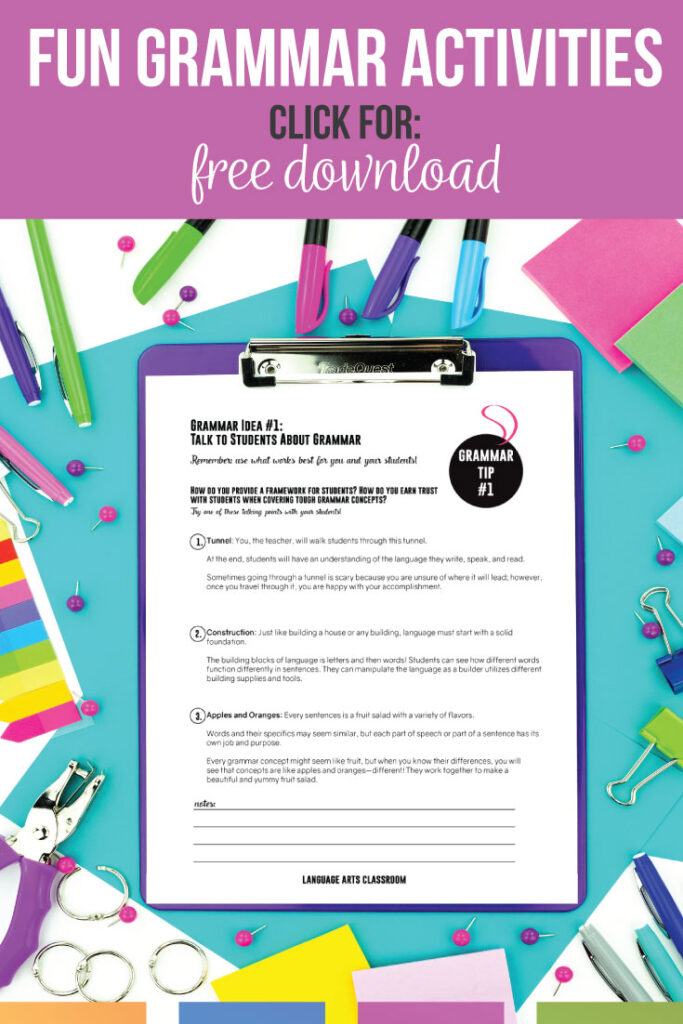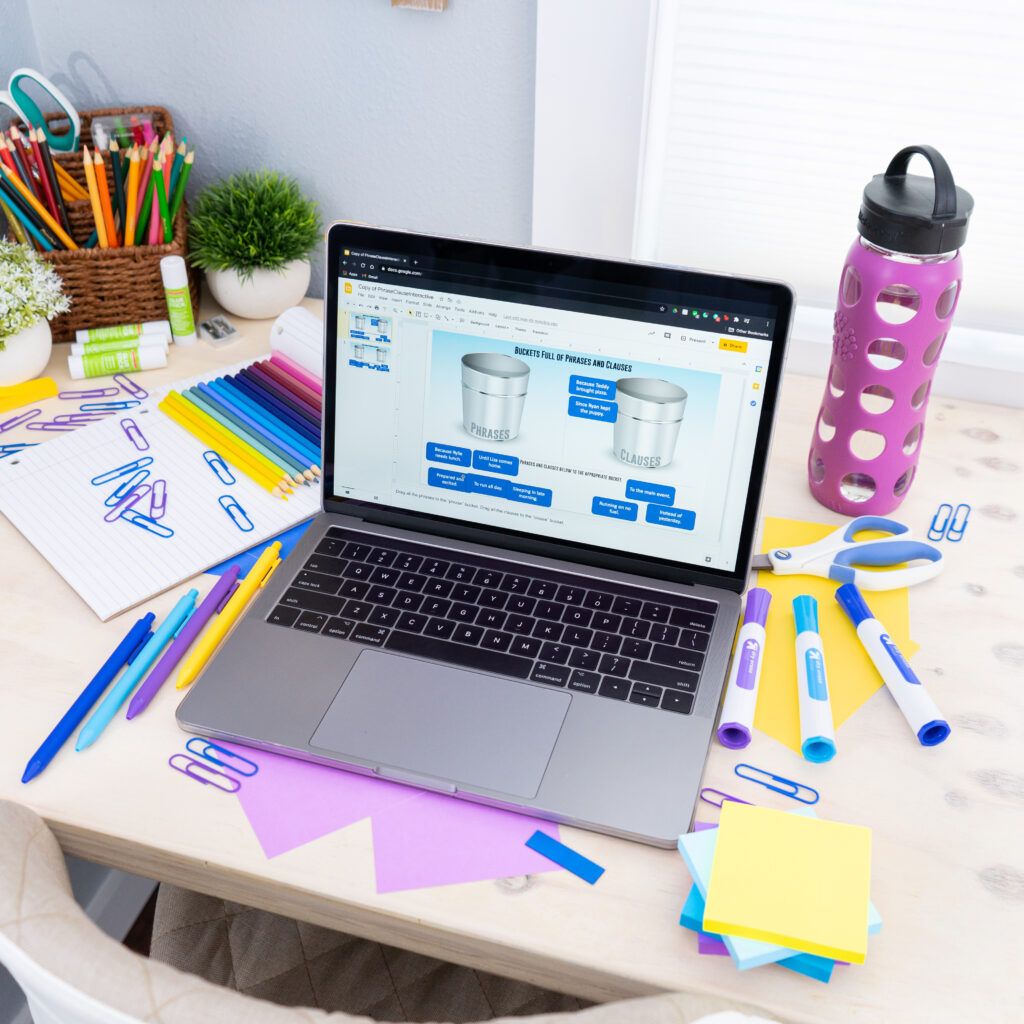“Making Grammar Fun!” is part eight in a ten-part series about teaching grammar to older students. In this post, I cover fun grammar activities. You may want to start with part one.
“Making grammar fun” sounds so cliche, so silly. It is feasible though, and worthwhile. You can implement fun grammar lessons.
Today, I consider my classes to be (overall) fun, but I haven’t always thought that. Classes aren’t fun every day (what in life is fun every day?), but most days, my students and I laugh and joke around.
Those fun parts include grammar. We complete grammar daily, and it is woven with vocabulary, reading, and writing. If you are looking for how to teach grammar in a fun way, I do have ideas.
I know that some teachers don’t want to teach grammar, and that some teachers fear that students will hate grammar lessons. It doesn’t have to be that way! Making grammar fun and meaningful is possible. What is holding you back? Here were my fears, followed by activities for making grammar fun.
The Fun Grammar Story (that won’t take long).
At one point in my teaching career, I recognized the magnitude that the teacher’s outlook had on students. I realized my attitude made the class. The entire class period relied on my attitude! That is crazy powerful, and crazy scary.
About the same time I recognized that, I was stepping up my grammar game. I started experimenting with grammar from literature and grammar from student writing. My grammar lessons seemed practical and engaging, but the attitude was missing. As I looked at how to teach grammar in a fun way, I realized my attitude should change.
I needed to project positive vibes to my students about grammar. If I acted like this part of the class period sucked, guess what? That’s how they would respond.
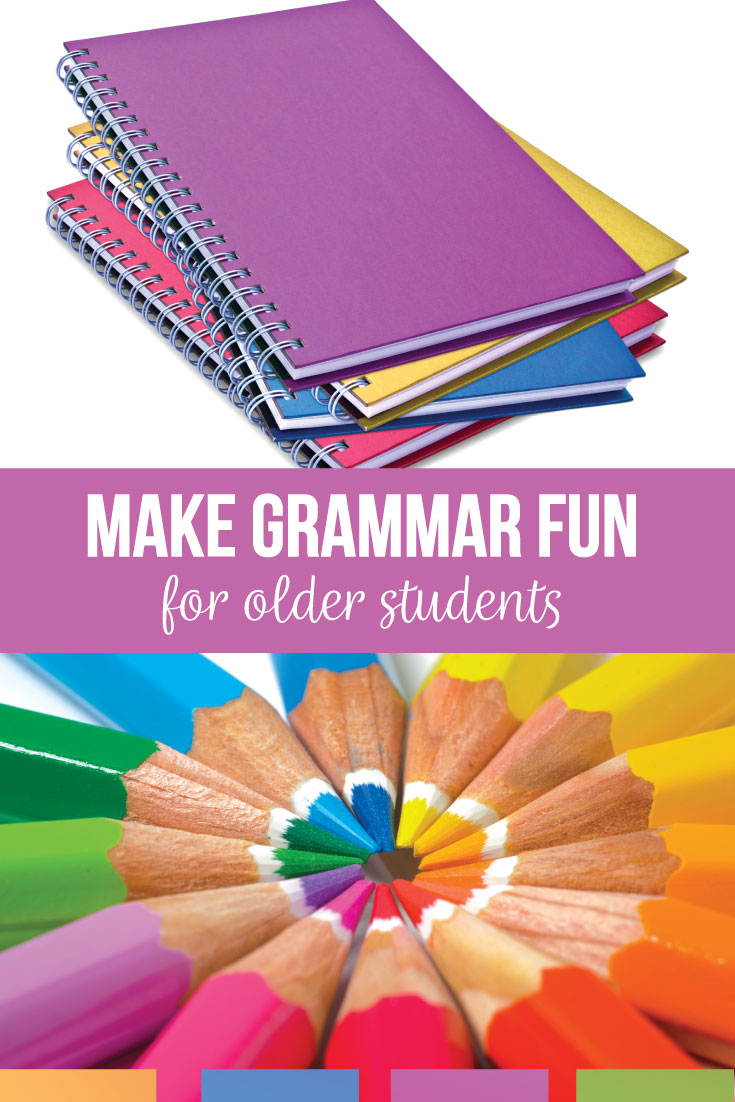
Faking It.
Students groaned about grammar, and that bothered me. I found deeper meaning in literature and writing because of grammar, and I wanted my students to share in that experience. My attitude needed to be over the top.
At first, I put on a show, almost acted goofy about grammar. It was a bit of “fake it until you make it” type of performance.
I joked about my excitement with grammar. For instance, I used sports metaphors. (This is quite the reach for me.) We did “grammar jacks” and “sentence sit-ups.” My students thought I was a nerd, but I was desperate. I wanted these grammar lessons to succeed. I wanted students to understand.
And then? Once I saw how grammar improved my students’ understanding in class, I was genuinely excited—I didn’t have to fake it anymore.
Empowering others with grammar.
Can grammar be empowering? No ELA teacher will argue that language is not powerful.
Then why wouldn’t an understanding of grammar be empowering?
It is, and when I combined my efforts with my excitement and my new grammar lesson plans, I saw a chain-effect.
My passion transformed into excitement, to honest fun while teaching grammar. Playing with sentences on a worksheet didn’t thrill me (or students), so I began manipulating sentences word by word with my students. We had fun, and we learned together. I continued playing with grammar and thinking of ways to make grammar relate to students.
I developed these ten ideas for making grammar fun.
Grammar Activity One: manipulatives
The biggest game changer with grammar lessons was when I decided students should hold their language. I created hands-on pieces of grammatical concepts, and I encourage students to create more pieces. The combination of their involvement and the kinesthetic aspect has turned into the best grammar activity. Students build sentences and punctuate them correctly.
The sentences are guaranteed to be goofy, and students remember rules (punctuation, sentence structure, parallelism) more when they literally move the pieces.
Grammar Activity Two: interactive notebooks
An interactive notebook can be the “home base” of your grammar lessons, and the notebook can be bright and fun. Students personalize these notebooks and because they feel comfortable with what they have made, they consult it as they work. At the start of the year, I emphasize the procedure of getting out the notebook to consult while we work.
Eventually, the notebooks come out automatically.
Grammar Activity Three: one-pagers
One-pagers allow each student to choose what to study. I might ask students to choose from verbs, adjectives, or adverbs, but students get to choose the picture book they study. Students who are nervous about grammar or feel defeated by “grammar lessons” will find that they indeed can discover concepts and apply them to their writing.
The creative writing activities that develop from one-pagers and picture books are priceless and fun grammar in action.
Grammar Activity Four: explore language
“Grammar” is so much more than a set of rules, and once students realize that studying language can unlock an author’s mystery or a speaker’s true message, they buy-in to the idea of studying grammar. People who work in marketing and advertising know how to use language to sell products. Students who want to work in marketing will realize the potential for language and their future careers.
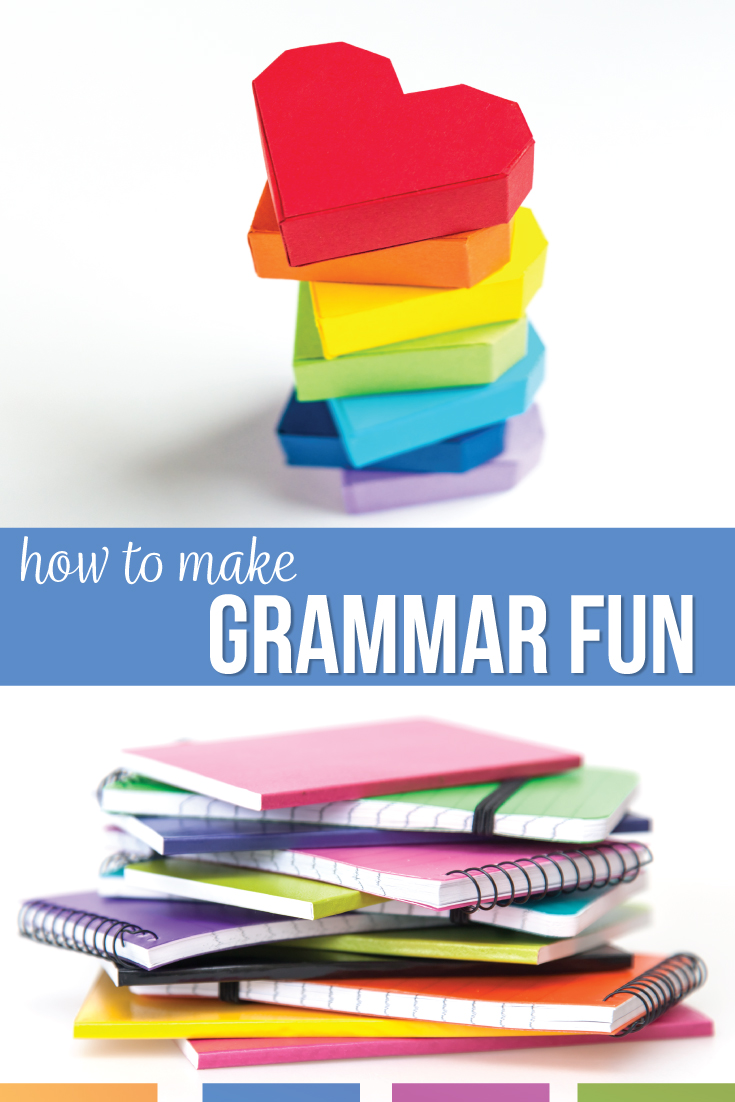
Grammar Activity Five: sticky notes/labeling
I do not completely understand why students love sticky notes, but I am completely supportive of letting them utilize that tool, especially with labeling grammar concepts. When I teach nouns and adjectives, students label my room. Students also add examples on sticky notes for other concepts. We then add those to anchor charts or posters. When we review, the sticky notes become part of our practice. Students like handling sticky notes, and they appreciate when teachers reuse their creations.
Grammar Activity Six: coloring
I taught at an alternative school for a year. Many of those students had lived through trauma, and succeeding at school was not a goal of theirs. I was instructed to meet the standards, including grammar, but I knew a basic worksheet would not reach my classes.
I turned to coloring. Students relaxed and enjoyed coloring, and many of those students understood grammar. The coloring sheets can be part of station work or fast-finisher work. I also use coloring sheets for differentiating.
Grammar Activity Seven: grammar sorts
A grammar sort can easily become a timed game with groups in pairs. Arrange different grammar sorts around the room, and have partnerships or small teams compete to sort the concepts.
If you have students completing a variety of topics, students can then turn the completed grammar sorts into posters.
Grammar Activity Eight: task cards
I connect seasonal and monthly events with grammar via task cards. Older students appreciate the acknowledgement of their lives outside of school, and I’ve connected with students over bell-ringers.
If we start the class with grammar task cards that incorporate the seasons, I’ve not only worked with language, but I’ve also had fun conversations with students, deepening our relationships. It’s almost a pattern that we begin the class by discussing grammar and our lives. As we continue throughout the semester, we branch off from those task cards with spur of the moment sentences.
Grammar Activity Nine: images
Part of grammar fun is being goofy with the ideas.
For instance, when I teach coordinate adjectives, I show students a scale to help them visualize how the adjectives “weigh” the same. I draw ice cream cones for sentence structure. (Simple sentences have one scoop in a cone.) I’ve also drawn conjunctions as glue because they hold words, phrases, and clauses together.
Grammar Activity Ten: mentor sentences
Mentor sentences about popular books and games will be engaging for students. When students love a story, they are more likely to look at the content from various angles. What if you looked at the sentence structure? the adverbs or lack of modifiers? Does the language contribute to the author’s tone?
Mentor sentences can also be a great addition to writing, making a nice connection from literature to grammar to writing.
Making grammar fun was no longer a chore; it was a natural part of my ELA classes.
Think of it this way: most teachers love reading with students and helping them better their writing. Making grammar fun can be a natural extension in your language arts classes.
I genuinely love teaching grammar to students. Students who may not enjoy English class (often reading) thoroughly enjoy grammar. I want to reach all students, and teaching grammar helps me do that.
Teaching grammar with an upbeat attitude didn’t come naturally to me, and it may not to you either. After I built lessons and learned teaching tricks, making grammar fun was no longer a chore.
I hope you have the same success.
Ready to read part nine in the series? I don’t understand grammar is next.
Would you like 10 fun grammar activities—alternatives to the grammar worksheet? Join my newsletter and receive access to ten fun grammar activities.

